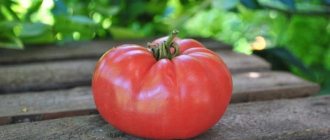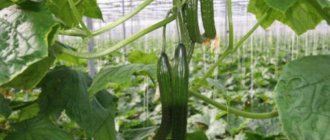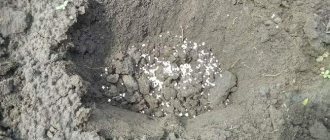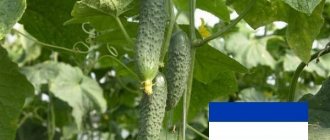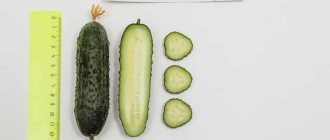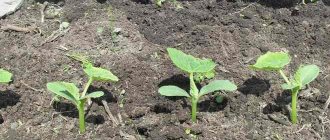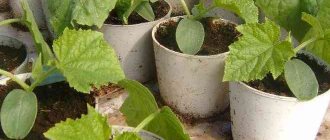Cucumbers are grown in almost every garden and summer cottage. This crop is considered unpretentious and easy to grow, but failure to comply with key rules of agricultural technology can lead to a significant reduction in yield, and sometimes to the death of plantings. What is the care of cucumbers in open ground, and what secrets do gardeners need to know?
Growing cucumbers in open ground
Finding a place to grow in the garden
Now you need to understand where on your site there is a suitable place for ground cucumbers.
Good neighbors for cucumbers are beans, peas and corn, and bad neighbors are cilantro, oregano, hyssop and basil. The best predecessors: legumes, cabbage, potatoes, onions, tomatoes.
A cucumber bed cannot be used for two years in a row, since many pathogens accumulate in the soil over the course of a year. So next year we will have to look for a new place.
When choosing a location, do not forget that cucumbers love warmth and protection from the winds. And although the requirements for the amount of light differ for different varieties, the bed must still be sufficiently illuminated.
Before planting seedlings or seeds, the area must be prepared. The soil should be light, well fertilized, non-acidic with a pH of 6.4-6.8. In the fall, the earth is dug up to the depth of a spade bayonet, without breaking the clods. Heavy clay soils are diluted with peat with the addition of lime (1 cup per bucket), old sawdust, and coarse sand. Then compost or manure is added (1-2 buckets/sq. m.). Acidic soils are deoxidized by adding lime, chalk, and ash. In the spring, while moisture remains in the soil, the soil is dug up again and the clods are broken up.
Provide cucumbers with adequate nutrition
You can tell that your cucumbers are missing something by changes in the color of the leaves and the shape of the fruit. But sometimes it’s not only a lack of nutrition, but also a lack of compliance with growing standards, for example:
- lack of nitrogen - the tip of the cucumber grows light, narrowed and curved;
- lack of potassium - the fruits become pear-shaped;
- lack of nutrition - bunched varieties of cucumbers shed some of their ovaries;
- uneven hydration - a constriction (“waist”) appears in the middle of the cucumber;
- cross-pollination of different varieties and hybrids - the fruits grow in an arched manner.
In order for cucumber fruits to be smooth and beautiful, it is necessary to timely apply various fertilizers to the soil and alternate them with foliar fertilizers several times a season. To do this, you will need organic matter (rotted manure or compost must be added to the soil before planting cucumbers) and specialized fertilizers for cucumbers (Sudarushka, Velikan, Agricola, BioMaster, etc.). You can also replace them with folk remedies for feeding cucumbers.
- Feeding cucumbers with folk remedies - 5 “working” recipes
What folk remedies can be used to feed cucumbers during the season in order to reap a good harvest?
Solving issues with the garden bed
In the middle zone, cucumbers grow better not just in level ground, but in beds. Their width is 90-100 cm, height 20-30 cm. An excellent solution is a warm bed, where under a layer of soil there is the decaying organic matter that these plants love so much; in such conditions they will be warm and comfortable.
There are also other placement options: cucumbers are grown on compost heaps, in barrels filled with branch cuttings, chopped straw, sawdust and other organic residues at the bottom, and with fertile soil at the top. They even cultivate it in large, durable plastic bags - well, this is more of an exotic thing, although such a place for cucumbers is very easy to set up: you don’t need to dig up the ground, the entire “structure” is on the surface.
Pest and disease control
Common cucumber diseases are root rot, powdery mildew and anthracnose. I will tell you about their signs and methods of combating such diseases.
Powdery mildew should be expected on cucumbers during prolonged cool weather combined with high air humidity. Initially, a white coating resembling flour appears on the tops, then the foliage begins to wither, turn yellow, and dry out.
Powdery mildew can be stopped using traditional methods:
- At the first sign. Spraying the tops with manure infusion: 1 part dry mullein to 10 parts water.
- In case of severe damage. Spraying cucumber plantings with a 5% solution of ferrous sulfate.
- As a preventive measure. Double treatment with “Topaz” - when 8-10 true leaves are formed and at the start of flowering. For 10 liters of water - 1 ampoule.
- For downy mildew. Stop watering and fertilizing, then spray: per 10 liters of water - 1 tbsp. spoon of soap shavings + 40 g of “Hom” product.
- With the end of the season. Treating the bed with a solution of copper sulfate: per 10 liters of water - 3 tbsp. spoons of the product. You must remember to collect and burn all plant debris.
Root rot can develop immediately after transplanting seedlings. The leaves begin to fade during the day and recover in the evening. Diseased plants are revealed by stems that have turned brown at the base. I fight root rot in a comprehensive manner:
- I hill up the affected plants - I rake fresh soil up to the stem to stimulate the development of new roots.
- I spray it with Effecton solution to boost immunity.
- I treat the contaminated soil with the fungicide “Hom” or the biological agent “Baktofit”.
Anthracnose is insidious in that it affects leaves, canes and green plants: the tops become covered with yellow spots, the stems wither and dry out, and the fruits become inedible. The sooner help is provided to the plant, the greater the chances of saving it. I traditionally use 1% Bordeaux mixture to combat anthracnose.
The most common uninvited guest on cucumbers is aphids. You will guess about the visit by the limp tops, yellowish spots on the leaves, and damaged ovaries. The danger of the pest is that it multiplies rapidly: if you leave things to chance, in 10 days there will be nothing left of the cucumber bed. Why do I fight aphids as soon as I discover:
- I prepare a soap-ash mass: for 1 liter of hot water - 2 tbsp. spoons of ash, 2 tbsp. spoons of laundry soap shavings.
- I dilute the mixture until smooth.
- I start processing in the morning - I thoroughly wash every leaf, every degree.
- To prevent the plants from “burning out,” I shade them for a day with covering material.
- Every five days I repeat soap-ash sprays until the pest is completely destroyed.
- For preventative purposes, I dust the soil in the cucumber beds with the same ash.
- And also release ladybugs, natural enemies of aphids.
ladybug against aphids on cucumbers
fighting a mole cricket in the garden
The second uninvited guest that threatens cucumbers, especially young seedlings, is a mole cricket. A simple trap is effective against the pest:
- I take a one and a half liter bottle, cut off the bottom and neck from it.
- I cut the resulting plastic cylinder into three parts.
- I bury these rings in the bed with most of the rim - I leave the plastic about 0.5 cm high above the ground.
- I plant 3 cucumber seeds in each ring.
The result is a very simple and reliable protection against mole crickets, which further facilitates plant care.
High-quality seeds, strong seedlings, and a good variety are not yet a guarantee of a royal harvest. Pay due attention to caring for cucumber beds from the moment of sowing, planting seedlings until fruiting. Watering, loosening, fertilizing, pinching, forming a bush is the minimum necessary to obtain a good harvest.
We choose the option of placing plants: spread out or vertically
If you settled on traditional beds, then you need to understand how the cucumbers will be placed on them.
Cucumbers spread out
An older method of growing ground cucumbers in beds, when the vines lie freely on the ground. It is enough to distribute them evenly over the bed and pin them over the 6th leaf. This is how small cucumbers with rather rough skin are cultivated; they are the best for pickling.
The advantages of this method:
simple and cheap.
Minuses:
It is inconvenient to care for plants, the greens lie on the ground and become dirty, and some of them are easy to miss when harvesting; there is a greater risk of diseases and pest damage.
Cucumbers on a trellis
These problems do not occur when growing cucumbers on a trellis. To make supports, high stakes are driven in on both sides, a lath is strengthened on top or wire or strong rope is pulled. You can use a plastic or metal mesh with large cells for vertical growing, or even just drive a few tall stakes in a circle with an angle towards the center, fasten them together at the top - you get something like a frame for a hut.
The advantages of this method:
The land is used rationally, care is simplified, plants receive more sun, suffer less from pests and diseases, and as a result, the yield increases significantly.
Longer and thinner-skinned cucumbers can be grown on a trellis. Usually these are hybrids, among which it is better to prefer those that do not overgrow with side shoots. This method is very convenient when visiting the site infrequently.
Minuses:
more labor-intensive (you need to equip a trellis), protection from the wind is required. This could be the wall of a building, a blank fence (on the south side!), or you should triple the curtain of tall plants, for example, sunflowers or corn.
Pinch cucumber vines in a timely manner
Still unsure whether you should pinch cucumbers? Our answer is definitely yes! And the point is not only that uncontrollably growing cucumbers can turn your greenhouse into a jungle, but also that in these thickets there is practically nothing to profit from. After all, the female shoots on which the fruits develop grow only in the lateral parts of the plant. But simply cutting off all the extra (in your opinion) vines and leaves is also pointless and even harmful, so before you start pinching cucumbers, you need to understand what kind of variety is in front of you.
Single-stem varieties and hybrids with weak growth of side shoots do not need to be pinched.
The remaining varieties can be safely formed. If you have a self-pollinating plant , simply tie it to a trellis, wait for the first 2-3 side shoots to appear and pinch them after the first leaf, and pinch the subsequent ones when they reach half a meter in length.
If you grow bee-pollinated cucumbers , then tie up the central shoot, pinch it when it reaches half a meter in height, in the axils of the 3-4 lower leaves, completely remove all the side shoots, and shorten the next 2 pairs of shoots to 20 cm, and shorten the side shoots formed above them to 50-60 cm.
Parthenocarpic hybrids of cucumbers, which form fruits without pollination, are pinched in a special way. But it is important to be sure that this is exactly the hybrid you are looking at, otherwise the plant may die from improper care. To begin, “blind” (pinch after the first leaf) 4 side lashes. Then leave the lashes along the meter, but shorten them so that there is no more than 1 ovary on each. On the next 50 cm, leave 2 ovaries and 2 leaves. When the main shoot reaches the top of the trellis, move it to a horizontal position by wrapping it several times around the trellis wire. After 2-3 shoots appear on this horizontal part, pinch the main stem.
You can pinch cucumbers for the first time no earlier than they reach a height of 30 cm, but their maximum length should not exceed 170 cm.
Deciding on the method of cultivation: seedlings or non-seedlings
When all the preliminary preparations are completed, you can start planting - all that remains is to decide: grow cucumbers through seedlings or simply plant seeds in the garden. In the middle zone, and even more so in the south, both options are possible. In the northern regions, it is better to prefer the seedling method.
From experience, it is quite possible to combine both methods: sow some of the seeds at home and grow them in pots on the window, and sow the other part directly in the garden bed. Then you will get two waves of cucumbers - those grown from seedlings will produce a harvest approximately 2 weeks earlier. In any case, we will consider both options - first with seedlings, and then without them.
Phases of cucumber development.
Photo
Let's briefly look at the phases of cucumber development from planting to harvest.
- Seed germination begins at a temperature of 15 - 16°C. That is why sowing is done in well-warmed soil (or the bed must be insulated).
- The first shoots rise on the 4th - 6th day from planting, at a temperature of approximately 25 - 30 ° C, from 4 to 10 days the seeds germinate at a temperature of 20 - 25 ° C, if the temperature is 17 - 19 ° C, then the shoots will appear only after 10 - 12 days from landing. At lower soil temperatures, the seeds will not germinate.
- The first true leaves (not cotyledons) will bloom approximately 5 days after germination.
- The vine will bloom in 35 - 40 days if the temperature is not lower than 20 degrees; at 25 -28 ° C, flowering occurs earlier, after 25 -30 days. The flowering period of each flower is only a few days, no more than 5 days. During this time, the flower must be fertilized, then a cucumber will form.
- Under favorable weather conditions, after 7 days you can harvest the first harvest of young cucumbers. If the flowers remain unfertilized, then there will be no ovary. But this applies only to those varieties that need fertilization; hybrids and self-pollinating varieties are guaranteed to have an ovary.
It turns out that caring for cucumbers from planting to harvest will take approximately 50 - 70 days. And you can already pick delicious cucumbers without wasting time.
Growing cucumber seedlings
Seed preparation
Cucumber seeds remain viable for 5-6 years. Branded ones are usually covered with a colored shell (encrusted), they are already disinfected and treated with growth stimulants. In order not to wash away the beneficial substances, they are sown dry. Such seeds do not require pre-sowing treatment.
Seeds collected independently, purchased second-hand, or donated require processing. There are many methods for preparing for sowing; you shouldn’t try to try everything, it’s better to choose those that are really needed and not disrupt the sequence of the following actions.
1. Selecting full-bodied seeds
, we reject “dummies”. To do this, cucumber seeds are placed in a solution of ordinary table salt (30 g/1 l of water). Those that have sunk to the bottom are washed and left.
2. Warming up.
Seeds of varietal cucumbers, especially if they are fresh, are best heated to promote the rapid appearance of female flowers. You can keep them in the sun for 3-4 days. And if there is no time left for this, then the seeds can be heated in hot (53 degrees) water in a thermos for 15-20 minutes before sowing.
3. We disinfect.
To do this, the seeds are soaked in a solution of phytosporin-M or bactofit, these are biological fungicides. Or you can hold it in a dark purple solution of potassium permanganate for 20 minutes. Then washed in running water.
4. We accelerate germination.
Germination energy is increased with the help of growth stimulants (zircon, Epin-extra, HB-101) or fertilizer solutions containing microelements, soaking the seeds in them according to the instructions.
5. We germinate.
It is advisable to germinate the seeds until a root 1-5 mm long appears. First, the seeds are kept in warm water for 2-3 hours, then in a warm place for a couple of days, wrapped in a wet paper napkin and placed in a plastic container with a lid.
By the way: For sowing varietal cucumbers, it is better to use 2-3-year-old seeds; they produce more female flowers.
Sowing seeds for seedlings
The time for planting cucumber seeds for seedlings for the middle zone is late April - early May. Such seedlings will be ready for transplanting into the ground by the beginning of June. Sowing dates for other regions, as well as favorable days according to the lunar calendar, can be found here - When to sow cucumber seeds for seedlings.
Sowing is done in stored containers (peat humus pots, cassettes, milk cartons, homemade cylinders measuring 8x8x8 cm). If there is a catastrophic lack of space, you can first use a small container, and when the first real leaf appears, transplant it into a larger one.
The containers are filled with loose nutritious soil: ready-made from the store (“For cucumbers”, “Magic bed”, etc.) or you prepare it yourself by mixing humus, low-lying black peat and semi-decomposed brown sawdust in a ratio of 2:1:1.
The soil is spilled with warm water, preferably with a solution of microfertilizers. When the moisture is absorbed, begin sowing. Place 1 seed in each container, deepening it 1.5 cm. At the same time, lay the seeds flat, even sprouted ones. Sprinkle with a layer of earth of at least 0.5 cm. Cover with transparent film and place in a warm, bright place. Water only when the top layer of soil dries out.
Seedling care
Until shoots appear, the cucumber crops are kept at room temperature, then, to prevent the plants from stretching, they are sent to the windowsill, where the temperature is 17-20 degrees during the day, 14-15 at night, but not lower, drafts are excluded. After 2-3 days, the temperature is raised to room temperature.
Watering needs to be done carefully, only with warm water. Weak seedlings are fed with complete mineral fertilizer with a predominance of nitrogen; you can “encourage” it with epin-extra or immunocytitis.
Weeks before planting in the garden, the plants begin to harden off, for which they reduce watering and take the seedlings out onto the balcony, loggia or street, preventing the plants from being exposed to the scorching rays of the sun.
Choose the right varieties and hybrids of cucumbers
In any, even the smallest garden store, you can find more than a dozen bags of cucumber seeds. If you don’t yet know which variety is right for you, it’s easy to believe the tempting picture and grab the package that seems the brightest. However, when choosing a variety, you should focus not on the promises of marketers, but on the fine print printed on the back of the pack.
- The best varieties and hybrids of cucumbers without bitterness (description with photo)
We will tell you which cucumbers will please you with your harvest and will not taste bitter in any weather conditions.
First, focus on the growing location. If you have a greenhouse or hotbed, choose varieties and hybrids for closed ground; if you plan to plant them simply on ridges, for open ground. Secondly, do not skimp on seeds and choose cucumbers that are resistant to common diseases and not prone to bitterness. As a rule, these are hybrids, for example, Gerasim F1, Garland F1, Doka F1, Mumu F1, Round Dance F1, etc. And finally, don't go after bundle hybrids. Yes, they look amazing, and they can produce a rich harvest, but at the same time they are very capricious. If you don’t water and feed them literally “by the hour,” then instead of abundant bunches you will get drying out ovaries.
Sow seeds in the ground
If you don’t want to bother with seedlings, you can get by by sowing them directly into the ground. However, we recommend planting some of the seeds on seedlings, and while they are growing, sowing the second part in the ground.
In the middle zone, this is done no earlier than May 25 - the soil at a depth of 10 cm should warm up to 12-14 degrees. In cold and wet soil, the seeds will die.
See sowing dates for other regions and the lunar calendar for planting cucumbers here - When to plant cucumbers in open ground with seeds.
Before sowing in the ground, we recommend hardening the cucumber seeds. If you do this, they will germinate more quickly and withstand cold weather better. There are two methods of hardening: variable temperatures and simply cold. Both methods are effective, so which one to choose is purely a matter of individual preference. When hardening at variable temperatures, the seeds are soaked until they swell in water for 7-8 hours. Then they are kept in damp cloth or sawdust for a week: at night they are in the refrigerator at 0-2 degrees, during the day in the room. The second option is hardening at constantly low temperatures; for this, the seeds are kept for 2 to 7 days at a temperature close to zero.
Advice: In a warm bed, under a film, cucumbers can be sown earlier - in the Non-Black Earth Region in mid-May.
Seeds can be sown in the ground dry, soaked and hatched (with the root barely showing) - as you like. Sow in 2 rows along the bed. The distance between plants in a row depends on the chosen growing method (spread or vertical) and on the size of the plant, but not less than 20 cm. Planting depth - 2 cm. Before planting the seeds, the furrows are watered, but after planting - no longer, otherwise the seeds will go deep into the ground.
The crops are sprinkled with a thin layer of peat, humus, or simply fertile, loose and slightly damp soil. Before emergence, in the heat, water, but very carefully, from a watering can with a strainer. Crops are covered with non-woven material or film, in case of severe cold weather, both. Cucumbers can be kept under the film until flowering.
After what crops should cucumbers not be planted?
You should not plant cucumbers in the place where zucchini, squash, and eggplant grew. After them, microorganisms accumulate in the soil, which will then lead to plant disease.
After what crops can cucumbers be planted? It is good to grow cucumbers in areas where potatoes, tomatoes, cauliflower, root vegetables or legumes were previously grown.
Planting seedlings
At the age of 15-25 days, when 1-2 true leaves appear, cucumber seedlings can be planted in the garden. After 20-25 cm, holes are made with a depth of 10-12 cm. They are planted in 2 rows with a row spacing of 60 cm. Before planting, the holes are well shed with water, a handful of compost or humus is poured onto the bottom, or maybe half a glass of ash. The soil in pots with seedlings is first shed with water. Plant together with a clod of earth, carefully cutting the cups. Cucumbers easily tolerate transplantation, especially in cloudy weather or in the evening. The planted seedlings are watered again, the soil is slightly compacted with the palm of your hand and sprinkled with dry soil or peat, and the plants are shaded.
Strong, stocky seedlings are not planted deeply, since the upper part of the stem has not yet become coarse and its contact with the ground is unsafe. For elongated seedlings, planting holes are made with a small depression and covered with loose soil up to the cotyledon leaves. This will stimulate the formation of adventitious roots.
How to grow cucumbers in open ground: popular methods
Growing up
With this method, cucumbers are grown in beds. The cucumber vines are spread evenly across them and receive enough sunlight for the entire plant to grow. But the downside is that changing the position of the vines, which cannot be avoided when caring for them, leads to oppression of the leaves and delays the ripening of fruits in the future.
Trellis method
This is a two-line method of planting cucumbers on a support. It is more labor-intensive, but has many advantages: space is saved, free access of air, good lighting and convenient care of plants, long-term fruiting and better quality of fruits, less susceptible to disease.
With this method, trellises or slats are installed on metal supports, which are driven into the ground to a depth of 30–40 cm. The bushes are formed and tied when the trellis is at least 1 m high. If the trellises are low, the cucumber stems are thrown to the other side without shaping and not tied. The trellis method is rightfully considered more productive than growing.
Growing in barrels
Metal barrels are filled with rotted plant residues, compost, the last layer is ordinary nutrient soil. The substrate is well watered and covered with plastic film for heating for a week. 5 seeds are sown in a container or ready-made seedlings are planted, covered with film. After the plants begin to grow, supports in the form of arcs are installed around the barrel. Plants are watered regularly as the soil dries out. This original method allows you to get an earlier harvest, saves space and time for caring for the plant, the fruits are always clean, and the structure itself with curly cucumber vines has a beautiful aesthetic appearance.
A barrel with a cucumber roof is an incredible sight!
Caring for ground cucumbers
Watering
Cucumbers grow a large green mass and consume a lot of moisture, while their root system is not able to “pump up” water from the depths, so you have to constantly remember to water. It is needed most of all during intensive growth and fruiting.
If there is no rain, you will have to water the cucumbers 2-3 times a week so that the soil is always moderately moist.
Strong fluctuations in humidity are very harmful to cucumbers. They cannot tolerate either drying out or flooding, especially at low temperatures, this provokes diseases. The water must be settled and warmed in the sun to at least 20 degrees.
We advise you to read: Diseases of cucumbers in open ground
Mulch
Mulch made from cut grass, compost, and humus perfectly helps to conserve soil moisture, protect cucumbers from bitterness (especially in hot, dry weather), and also replaces frequent loosening and weeding, and keeps the soil consistently warm. It is useful to add soil to the base of the stem - additional roots will form.
Feeding
Cucumbers need a lot of nutrients because the plants develop quickly and bear fruit abundantly. When feeding, it is best to alternate mineral and organic fertilizers. The day before adding them, the cucumbers should be watered.
First feeding
carried out when three true leaves are formed, watering with mullein infusions (1:10) or, if there is no mullein, then bird droppings (1:20). They contain a high concentration of nitrogen, which is needed at the beginning of growth so that cucumbers actively gain green mass. A weak solution of nitroammophoska (15-20 g/10 l of water) is also suitable.
Second time
Cucumbers are fed before flowering, at which time they need phosphorus and potassium. Mineral fertilizers are used (30-40 g of superphosphate and 10-15 g of potassium sulfate per 10 liters of water), or you can use only ash. It is simply scattered over the surface before watering (100 g/sq.m.).
Third feeding
done during mass fruiting, it can be the same ash or potassium chlorine-free fertilizer, for example, potassium sulfate (3 tablespoons of granules/10 liters of water).
In addition to root feeding, spraying is carried out on the leaves. This is especially true in cold summers and in cases where it is necessary to restore productivity. Treat plants in the early morning or evening, but not in bright sun, otherwise you can burn the leaves. For spraying, solutions of complex mineral fertilizers and an infusion of wood ash are used.
Tip: Cucumbers are very responsive to organic feeding. If there is no mullein or bird droppings, you can make an excellent green fertilizer from grass clippings and weeds and feed them weekly.
By the way: The bitterness of cucumbers is caused by a substance called cucurbitacin, produced by the plant under unfavorable conditions. This can be bright sunlight with a lack of moisture in the soil and air, a sharp cold snap after a heat wave, watering with cold water, or damage to the vines. The appearance of bitterness is characteristic of varietal cucumbers, especially old varieties; in modern hybrids there is no bitterness, which is genetically determined.
Formation
Typically, bush cucumbers with short vines and weak branching are grown in the garden. They require almost no shaping. Only long-climbing and highly branched plants grown on a trellis require certain formation.
Read more about how to form cucumbers - Forming cucumbers in open ground on a trellis.
Specifics of growing vegetables in open ground: pros and cons
When growing cucumbers in open ground, you need to know that this pumpkin crop is very demanding of moisture, light and heat. It needs protection from the winds, shelter from unexpected frosts, and regular watering. It is not always possible to grow an excellent harvest, since it often depends on weather conditions. The process from seed to fruit is very labor-intensive. In addition, it requires the necessary knowledge of some of the features and secrets of growing fancy plants.
Advantages of growing cucumbers in open ground:
- low costs;
- the ability to clear the field of weeds before sowing (since late sowing is carried out);
- huge sales market;
Flaws:
- requirement for heat;
- the need for regular watering;
- dependence on weather conditions;
- manual collection
Grow proven varieties of cucumbers together with a trusted supplier:


